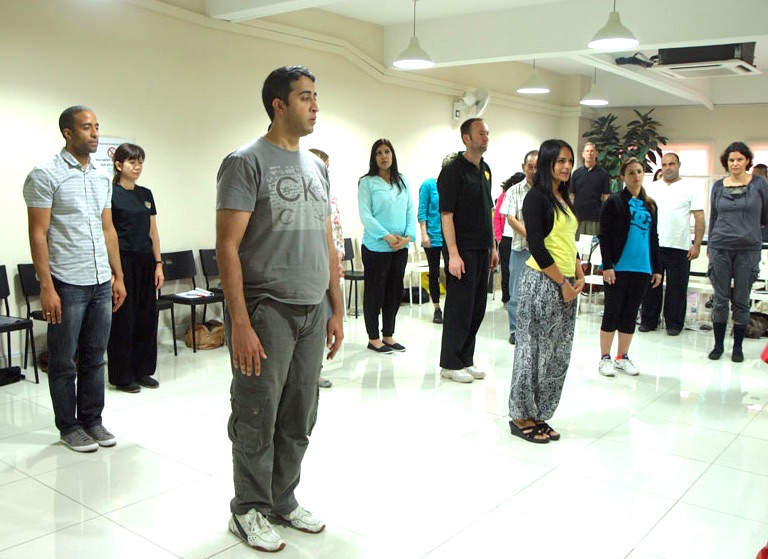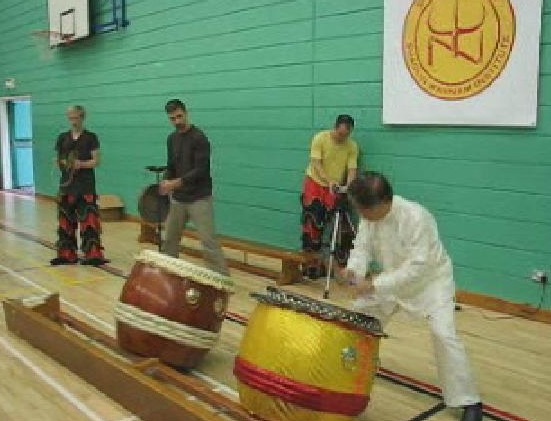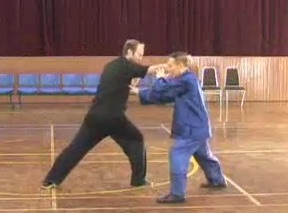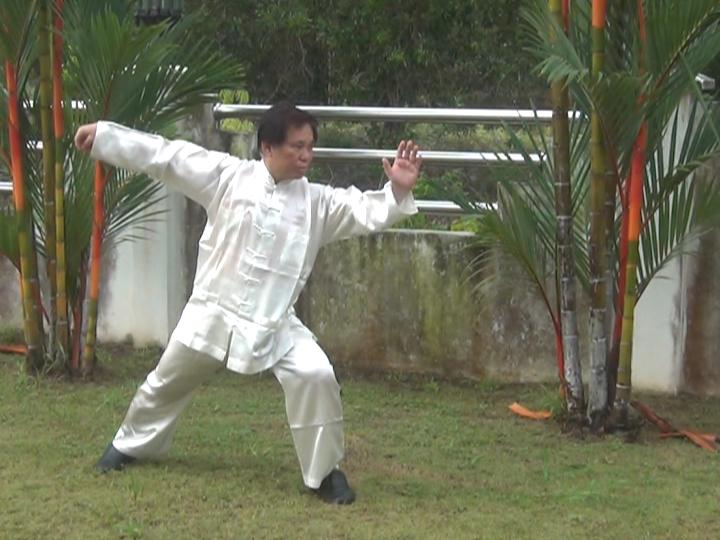SELECTION OF QUESTIONS AND ANSWERS
JANUARY 2019 PART 2

Practicing qigong gives us good health, vitality, longevity, mental clarity and spiritual joys
Question 1
You have often mentioned that practicing qigong make us healthy and full of vitality. We have practiced qigong for some time but we do not have the vitality shown in your webpages. Some of us are sickly. Why?
— Li, Taiwan
Answer
Practicing qigong make us healthy and full of vitality. It also gives us longevity as well as mental clarity and spiritual joys. Practicing qigong is one of the best things any person can ever do.
Why does practicing qigong make us healthy and full of vitality, as well as give us longevity, mental clarity and spiritual joys?
When we practice qigong, we generate an energy flow. The energy flow clears blockage, thus making us healthy. From the Chinese medical perspective, all illness is caused by energy blockage, and to be healthy is natural. Hence, by practicing qigong one can overcome any illness, and be healthy.
As we continue our qigong practice, we increase our energy flow which becomes vigorous. When our energy flow is vigorous, we are full of vitality. We continue our qigong practice, and have a lot of energy. The plentiful supply of energy enables our energy to flow for a long time, thus giving us longevity.
It is important to clear the mind of all thoughts when practicing qigong. Clearing the mind of all thoughts is one of the two necessary condition of qigong practice, the other condition being relaxed. Hence clearing the mind of all thoughts has become habitual through qigong practice, giving us mental clarity.
It is helpful to mention that some people are afraid of clearing their mind of all thoughts. They wrongly believe that if they clear their mind of all thoughts they become unable to think. Clearing the mind of all thoughts means mental clarity; it does not mean an inability to think. When one has mental clarity, he can think more effectively when he needs to.
Qigong is triple-cultivation. It not only cultivates the physical body and energy, but also the spirit. Hence, practicing qigong gives us spiritual joys, like being peaceful and happy. Qigong is spiritual, but not religious. Any person of any religion, or of no official religion, can practice qigong.
However, qigong is rare today. What many people practice nowadays are only qigong forms, and not genuine qigong. Practicing external qigong forms, like practicing external Taiji forms, will not give the benefits of qigong.
You and your classmates do not have the vitality shown in my webpages, and some of you are sickly because you probably have practiced only external qigong forms, and not genuine qigong.
More important than the forms in qigong are the skills to generate energy flow that clears blockage and opens organs. Skills need to be learnt from a master, not from a book or a video.
Question 2
If someone have attended as the only one from his country or area, how should he or she continue to practise Lion Dance at home alone when Lion Dance need 4-5 person for a show?
— Dimitri, Austria
Answer
Lion Dance is team work. We need a few people to perform a Lion Dance successfully.
If there is only one person from an area, he can practice Lion Dance according to the part he has chosen. There are two main parts in Lion Dance -- Lion Head and Lion Drumming.
He can practice, without the Lion Head, how to move the Lion Head adroitly, and various movements of Lion Dance steps. He should not only be solid but also agile. He should be able to jump adroitly from place to place.
For the Lion Dance Drumming part, he can cover a large tin so as not to make much noise. He then uses two Lion Dance sticks to beat the covered tin which acts like a Lion Dance drum. It is preferred if he can get proper Lion Dance sticks, which are about a foot long an about an inch in diameter. If he can't get Lion Dance sticks, any suitable sticks will do.
There are many ways of hitting a drum, known in Lion Dance as "seven-star drumming". Normally a new drummer learns from route-drumming, i.e. he learns from following exactly the hitting of an established drummer on a large Lion Dance drum.
But I have done an analysis of the drumming of most well known Lion Dance schools, and shall teach it at the Lion Dance course in Kuala Lumpur from 13th June to 19th June 2019. In this way every participant to the course can learn Lion Dance drumming in a few days than at least in a few months.
I believe my analysis of Lion Dance drumming is the first of its kind. I analysed the basic unit of drumming, various types of majestic drumming, walking-drumming, double-drumming, miss-beat drumming, rolling-thunder and flat-drumming.
In modern Lion Dance, the Lion Tail also plays a very important part. He needs to be solid, to support the Lion Head jumping to his stance, as well as to be agile, jumping from poles to poles.
The gong man keeps the base of the Lion Dance music, and the cymbal man keeps the rhythm. These performances are not difficult, and all participants to the Lion Dance course will learn them in just a few days.
Many schools of modern Lion Dance have left out the Laughing Buddha. This is a pity, as the Laughing Buddha was usually performed by the master himself. He ensured that everything was in proper order in any Lion Dance performance.

Lion Dance drumming is lively and vibrant
Question 3
If someone wants to buy a Lion Dance drum, how should the drum be? Is there anything special to pay attention when buying a Lion Dance drum? Can it be the same as a Dragon Dance drum?
Answer
It should be a proper Lion Dance drum, about 3 feet in diameter and about two and a half feet high. It is made of wood, covered with tampered buffalo's hide. The other end is hollow, and inside the drum there are often some springs.
Ensure that hide is springy, i.e. it produces a deep, resonant sound like that of metal, not like that of an ordinary flat drum.
A Lion Dance drum is different from a Dragon Dance drum. A Dragon Dance drum is smaller, about 2 feet in diameter, and the drum itself is about 2 feet high. The hide of the drum is thinner, usually lighter in color.
In Dragon Dance performances of Shaolin Wahnam Association, we used a Lion Dance drum. It was more majestic.
Question 4
I have a question about Kung Fu. Some time ago I did a lot of sparring and got to opponent number 16. I wish to finish and spar with the remaining 14. One reason why I didn't carry on was because I first wanted to be better at executing sequences. Defending and using openings left by the opponents was usually how I won.
— Sifu Roeland Dijkema, Shaolin Wahnam Netherlands
Answer
You should continue with the remaining 14 opponents, irrespective of how well you use your sequences.
The onus of the 30-opponent programme is improving your sparring skills, irrespective of the level of skills you started with. If your skills were low when you started, your earlier opponents would be less skillful. If your skills were high, your earlier opponents would be more skillful. You are always more skillful than your opponents from number 1 to number 30.
At the beginning, you have 95% chance of beating your first opponent, but your last opponent had 95% chance of beating you. By the time you complete the 30-opponent programme, you have 95% chance of beating your last opponent because of your improvement of skills while your techniques may remain the same. In other words, at all time you have 95% chance of beating all your opponents.
You will be quite formidable by the time you have completed the 30-opponent programme. You will be able to handle masters and professional fighters quite easily.

The Swimming Dragon sequence is very important in the Flower Set
Question 5
I will now carry on with 2 sequences: Lohan Carrying Moon in Bosom and Swimming Dragon from the Flower Set, my favorite sequence.
I would like to ask for advice about the first part of the Swimming Dragon sequence. I have found that some opponents only respond to a firm strike and ignore me touching their head.
If I wear gloves, what would be the best way to replace the dragon hand which bridges the opponent's punch? A leopard strike?
Would you still use a leopard to bridge along the opponent's arm or would it be better to strike at the ribs below? Or would you recommend using the dragon hand with gloves on and just gently tapping the opponent?
Answer
Carry on sparring with your opponents irrespective of what sequences you use, but ensure that the sequences you have chosen are effective.
Your sigung, Uncle Righteousness, used a simple sequence of Black Tiger and Fierce Tiger from the Triple Stretch Set, and won the enviable nickname of "Old Righteousness", and later "Uncle Righteousness" when he was more elderly. It is skills, not techniques, that are improved in the 30-opponent programme.
Both the Lohan Carries Moon sequence and the Swimming Dragon sequence are advanced. Not many opponents can defend against them.
Use the Swimming Dragon sequence as it is, i.e. with the dragon hand-form even with gloves on. The dragon hand-form can be two fingers pointing forward, or the whole palm pointing forward.
Strike the opponent, which may be an ad-hoc pattern from the sequence, whenever suitable with whatever hand-form that is suitable, including the leopard fist at his ribs.
Question 6
I have to admit that, though I know that you do not approve of people learning chi kung from books, I had learned chi flow from your very first book, almost 23 years ago. I can now teach myself a chi kung exercise, and reap the purported results and benefits alluded to it, with over training very easily being my greatest challenge.
— Riccardo, Canada
Answer
Congratulations for learning chi flow from my first book. Considering that more than 80% of chi kung practitioners all over the world, including in China, could not generate a chi flow on their own, and chi flow is the essence of chi kung, yours is a remarkable achievement.
The main reason I ask people not to learn chi kung from books is to prevent them from harming themselves, which they may do if they attempt advanced chi kung. Another important reason is to prevent them from performing gentle physical exercise but think that they are performing genuine chi kung.

Yang Style Taijiquan
Question 7
If someone has the skill of chi flow, will other internal skills continue to develop by practicing chi flow only?
Answer
If someone has chi flow, other chi kung skills may not continue to develop by practicing chi flow only. For example, to direct chi to various internal organs, or to develop internal force, he needs the appropriate techniques.
Question 8
I would also like to express my great gratitude and appreciation for all that I've learned from your books, and have the intention of eventually learning directly from you, like the Yang family form that I am currently being taught.
Answer
If you incorporate your chi flow into your Yang Style Taijiquan, you can develop some internal force, but it will take a long time. You can shorten the time tremendously by learning from a good teacher.
You need to learn to apply your Yang Style Taijiquan for combat. Chi flow alone will not enable you to have combat skills.
You can learn from a certified Shaolin Wahnam instructor at List of Instructors.
LINKS
Selected Reading
- Chi Kung: the Art of Developing Vital Energy
- Percussion Music of Lion Dance
- From 30% to 95% Chance of Winning Free Sparring Competitions
- Basic Self-Defence of Taijiquan
- Reflections on my Experience
